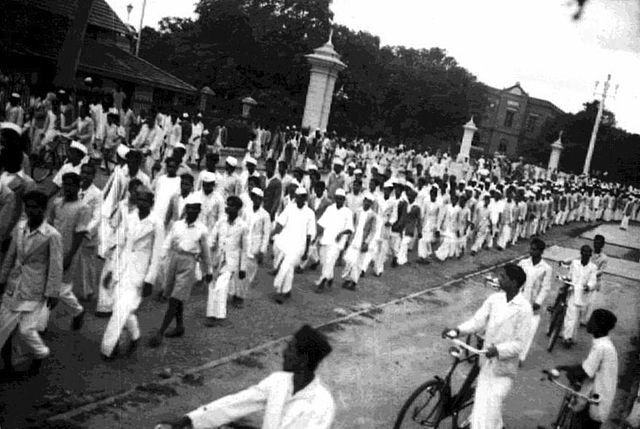Much is being made of Prime Minister Narendra Modi winning three times in a row, making him the first prime minister after Jawaharlal Nehru to achieve this feat. However, this is incorrect. Nehru was sworn in as prime minister not thrice but four times – in 1947, 1952, 1957, and 1962. While the 1962 elections were the third to be held in an independent India, Nehru had already been prime minister since 1947. If the interim government of 1946 – formed to oversee the transition of the country from a British colony to an independent republic – is counted, Nehru was actually sworn in as prime minister for the fifth time in 1962.
Not only has Modi fallen below the simple majority mark in his third term, but his performance, and that of the BJP, in the two previous elections is also far inferior to that of Nehru and the Congress during a similar period.
In 2014, the BJP won 282 seats. In 2019, its tally went up to 303 primarily due to the polarisation caused by the Balakot air strike following the controversial Pulwama terrorist attack. Before we focus on the the three consecutive elections won by Nehru, it is worth recalling that Atal Behari Vajpayee was also sworn in as the prime minister three times in a row – in 1996, 1998 and 1999 – and Indira Gandhi took oath as the prime minister four times – in 1966, 1967, 1971 and 1980.
In the first general election held in 1952, the Congress won 364 seats. Its tally went up to 371 in the second general election in 1957, but came down to 361 seats in 1962. In each of these elections, the total number of seats in the Lok Sabha was 494, far below the current strength of 542. Since the elections to the state assemblies were held simultaneously, the Congress won in all the states in the three general elections from 1952 to 1962 except losing one state in 1957 – when the Communist Party of India (CPI) won in Kerala, making him the first non-Congress chief minister in India and among the first communist leaders to be elected democratically anywhere in the world.
The opposition parties, like in the two previous elections, performed poorly in 1962 as well. While the CPI was the largest opposition party with 29 seats, C. Rajagopalachari’s Swatantra Party, contesting for the first time, secured 18 seats, and the Jan Sangh won only 14.
Socialists of all hues – Praja Socialist Party and Socialist Party – also won 18 seats combined. Despite the Congress’s overwhelming majority, Nehru held the opposition in great respect and was responsive to their criticism. The opposition parties, despite their low numerical strength, were able to influence government policies as Nehru encouraged free debate and always put national interest above that of his party. He regularly sat through the question hour and set an example of highest decorum, dignity and respect for parliamentary procedures and legislation.
In fact, the contribution of the country’s first prime minister, aptly called the architect of modern India, in laying down the foundations of parliamentary democracy and nurturing it for 17 long years after independence, is well known and acknowledged around the world.
Since Prime Minister Narendra Modi was sworn in for a third time on Sunday, along with his council of ministers, it may not be out of place here to recapitulate the modest size of Nehru’s ministry and the names of the outstanding personalities of the Nehru cabinet of 1962. His council comprised 17 ministers of cabinet rank and only 5 ministers of state (MoS).
Some of the prominent cabinet ministers were:
1. Jawaharlal Nehru, prime minister, minister of external affairs and minister of atomic energy
2. Morarji Desai, minister of finance
3. Jagjivan Ram, minister of transport and communications
4. Gulzarilal Nanda, minister of planning and labour and employment
5. Lal Bahadur Shastri, minister of home affairs
6. Sardar Swaran Singh, minister of railways
7. K.C. Reddy, minister of commerce and industry
8. V.K. Krishna Menon, minister of defence
9. Ashoke Kumar Sen, minister of law
10. K.D. Malaviya, minister of mines and fuel
11. S.K. Patil, minister of food and agriculture
12. Humayun Kabir, minister of scientific research and cultural affairs
13. B. Gopala Reddi, minister of information and broadcasting
14. C. Subramanian, minister of steel and heavy industries
15. Hafiz Mohd Ibrahim, minister of irrigation and power
16. Dr K.L. Shirimali, minister of education
17. Satya Narayan Sinha, minister of parliamentary affairs.
All the above eminent leaders were persons of high calibre, integrity and public stature chosen for their decades long service in the freedom struggle and in the building of modern India after independence. But it was Jawaharlal Nehru, who towered far above his colleagues, and it was his incomparable political and moral stature, lofty vision and outstanding achievements in domestic and international fields, that returned the Congress for the third consecutive time in 1962.
The high strike rate of 361, though slightly lower than 1952 and 1957, can , arguably, be attributed to the firm action taken by Nehru, in December 1961, to free Goa from 400 years of Portuguese rule. While there was countrywide applauding, one voice criticised the military action – Nehru’s friend-turned-foe, C. Rajagopalachari, who was by now the president of the Swatantra Party.
But the then prime minister took it lightly, remarking, “Rajagopalachari stands on a mountain peak by himself. Nobody understands him, nor does he understood anybody.” But some people did understand the upright Gandhian, and his party managed to win 18 seats, primarily in princely pockets of Rajasthan and Orissa.
After the Congress with 361 seats, and the Communists bagging 29 seats, the Swantantra was the third largest party in what was Jawaharlal Nehru’s last electoral battle in which he scored a brilliant victory.
Praveen Davar is a writer, an ex-army officer, a columnist, and the author of Freedom Struggle and Beyond.















